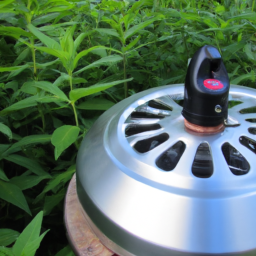So you’ve invested in a camping stove, ready to make delicious meals on your outdoor adventures. But have you ever wondered how long your trusty camping stove will last? In this article, we’ll explore the average lifespan of a camping stove and provide some helpful tips on how to extend its longevity. Whether you’re a seasoned camper or just starting out, knowing how long your camping stove will endure can help you plan for future expeditions and ensure you’re always prepared for a hot meal in the great outdoors.
Factors Affecting the Lifespan of a Camping Stove
When it comes to the lifespan of a camping stove, numerous factors come into play. Each of these factors can significantly impact how long your camping stove will last, ensuring that you make the most of your investment. From the quality of construction to user handling and misuse, let’s explore these factors in detail.
Quality of Construction
The quality of construction is arguably one of the most critical factors influencing the lifespan of a camping stove. The construction materials and overall durability of the stove can determine its ability to withstand the demanding conditions of outdoor use.
Material and Durability
Camping stoves can be constructed using various materials, including stainless steel, aluminum, and titanium. Stainless steel is known for its strength and resistance to corrosion, while aluminum offers a lightweight option. Titanium, on the other hand, combines both strength and low weight. Depending on the material used, the durability and longevity of the camping stove can vary.
Design and Engineering
The design and engineering of a camping stove play a significant role in its lifespan. A well-designed stove will have sturdy components and a solid structure that can handle the rigors of outdoor use. Look for features such as reinforced legs, secure fastenings, and stable flame control mechanisms. A robust design ensures that your stove can withstand the test of time.
Heat Distribution
Efficient heat distribution is crucial for both cooking performance and stove longevity. A camping stove with even heat distribution prevents hotspots that can cause damage to the stove and compromise cooking results. Look for stoves with built-in heat diffusers or burners designed to evenly distribute heat across the cooking surface.
Ignition System
The ignition system of a camping stove can also affect its lifespan. Some stoves feature durable and reliable ignition systems, such as piezo igniters, which eliminate the need for matches or lighters. A well-designed ignition system can reduce wear and tear on the stove, ensuring that it lasts longer.
Frequency of Use
Another significant factor influencing the lifespan of a camping stove is the frequency of use. How often you use the stove can determine the wear and tear it experiences over time.
Occasional Use
If you only use your camping stove occasionally, such as during camping trips a few times a year, it is likely to have a longer lifespan. With proper maintenance and care, a stove that sees infrequent use can remain in good condition for many years.
Regular Use
For those who use their camping stove frequently, such as weekend warriors or backpackers, the lifespan may be somewhat shorter. Regular use exposes the stove to more wear and tear, requiring more attention to maintenance and care to ensure its longevity.
Intensive Use
Camping stoves used intensively, such as by professional guides or outdoor enthusiasts who spend extended periods in the wilderness, may have a shorter lifespan. The constant use and exposure to demanding conditions can take a toll on the stove, requiring more frequent replacement or repairs.
Maintenance and Care
Proper maintenance and care are essential for maximizing the lifespan of your camping stove. By following recommended maintenance practices, you can keep your stove in optimal condition.
Cleaning and Degreasing
Regular cleaning and degreasing are crucial for preventing the buildup of food residues and grease, which can affect the stove’s performance and longevity. Use mild soapy water and a soft cloth to clean the stove after each use, paying particular attention to burners, valves, and other critical components.
Inspecting for Damages
Periodically inspect your camping stove for any damages or signs of wear. Check for dents, cracks, loose connections, and worn-out parts. Identifying potential issues early on allows you to address them promptly and prevent further damage to the stove.
Replacing Parts
Replacing damaged or worn-out parts is essential for maintaining the functionality and lifespan of your camping stove. Keep spare parts on hand, such as seals, O-rings, and valves, in case you need to replace them. Follow manufacturer guidelines and use genuine replacement parts for optimal performance.
Lubrication
Lubrication can help keep your camping stove’s moving parts functioning smoothly. Apply a small amount of heat-resistant lubricant to hinges, valves, and other components that may require lubrication. Be sure to use a lubricant specifically designed for camping stoves to avoid any potential damage.
Storage Practices
Properly storing your camping stove when not in use can also impact its lifespan. Consider the following practices for optimal storage:
- Cleanliness: Before storing your stove, ensure that it is thoroughly cleaned and dry to prevent the buildup of dirt or moisture, which can lead to corrosion or rust.
- Protection from Elements: Store your stove in a dry and protected area, such as a storage bag or a dedicated camping gear container, to shield it from dust, moisture, and other environmental elements.
- Positioning of Components: If your camping stove has detachable components, store them separately to prevent any potential damage or misplacement.
- Ventilation: Ensure that your stove is stored in a well-ventilated area, as this helps prevent the buildup of potentially harmful gases or odors.
By following these maintenance and storage practices, you can significantly extend the lifespan of your camping stove.
